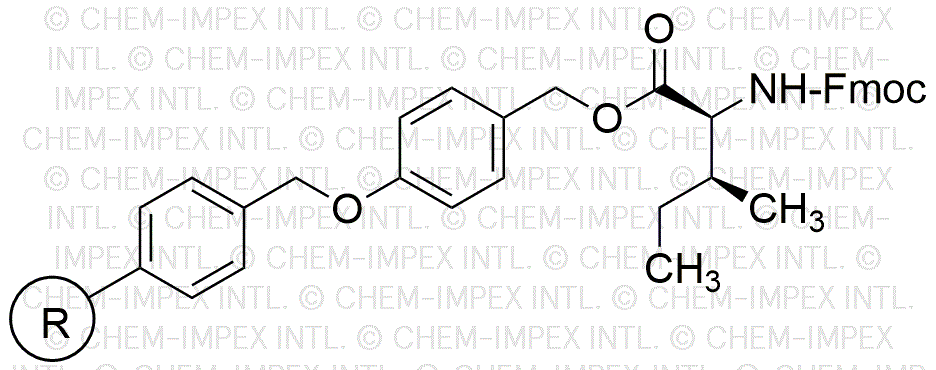Fmoc-L-isoleucine 4-alkoxybenzyl alcohol is widely utilized in research focused on:
- Peptide Synthesis: This compound serves as a protecting group in the synthesis of peptides, allowing for selective reactions and enhancing the yield of desired products.
- Drug Development: It plays a crucial role in the design of peptide-based drugs, particularly in optimizing their stability and bioactivity for therapeutic applications.
- Bioconjugation: The compound is used in bioconjugation processes, facilitating the attachment of biomolecules to surfaces or other molecules, which is essential in creating targeted drug delivery systems.
- Research in Cancer Therapy: It is explored in the development of novel anticancer agents, leveraging its ability to modify peptide structures for improved efficacy against cancer cells.
- Material Science: The compound is applied in creating functional materials, such as hydrogels, which can be utilized in drug delivery and tissue engineering applications.
General Information
Properties
Safety and Regulations
Applications
Fmoc-L-isoleucine 4-alkoxybenzyl alcohol is widely utilized in research focused on:
- Peptide Synthesis: This compound serves as a protecting group in the synthesis of peptides, allowing for selective reactions and enhancing the yield of desired products.
- Drug Development: It plays a crucial role in the design of peptide-based drugs, particularly in optimizing their stability and bioactivity for therapeutic applications.
- Bioconjugation: The compound is used in bioconjugation processes, facilitating the attachment of biomolecules to surfaces or other molecules, which is essential in creating targeted drug delivery systems.
- Research in Cancer Therapy: It is explored in the development of novel anticancer agents, leveraging its ability to modify peptide structures for improved efficacy against cancer cells.
- Material Science: The compound is applied in creating functional materials, such as hydrogels, which can be utilized in drug delivery and tissue engineering applications.
Documents
Safety Data Sheets (SDS)
The SDS provides comprehensive safety information on handling, storage, and disposal of the product.
Product Specification (PS)
The PS provides a comprehensive breakdown of the product’s properties, including chemical composition, physical state, purity, and storage requirements. It also details acceptable quality ranges and the product's intended applications.
Certificates of Analysis (COA)
Search for Certificates of Analysis (COA) by entering the products Lot Number. Lot and Batch Numbers can be found on a product’s label following the words ‘Lot’ or ‘Batch’.
*Catalog Number
*Lot Number
Certificates Of Origin (COO)
This COO confirms the country where the product was manufactured, and also details the materials and components used in it and whether it is derived from natural, synthetic, or other specific sources. This certificate may be required for customs, trade, and regulatory compliance.
*Catalog Number
*Lot Number
Safety Data Sheets (SDS)
The SDS provides comprehensive safety information on handling, storage, and disposal of the product.
DownloadProduct Specification (PS)
The PS provides a comprehensive breakdown of the product’s properties, including chemical composition, physical state, purity, and storage requirements. It also details acceptable quality ranges and the product's intended applications.
DownloadCertificates of Analysis (COA)
Search for Certificates of Analysis (COA) by entering the products Lot Number. Lot and Batch Numbers can be found on a product’s label following the words ‘Lot’ or ‘Batch’.
*Catalog Number
*Lot Number
Certificates Of Origin (COO)
This COO confirms the country where the product was manufactured, and also details the materials and components used in it and whether it is derived from natural, synthetic, or other specific sources. This certificate may be required for customs, trade, and regulatory compliance.

